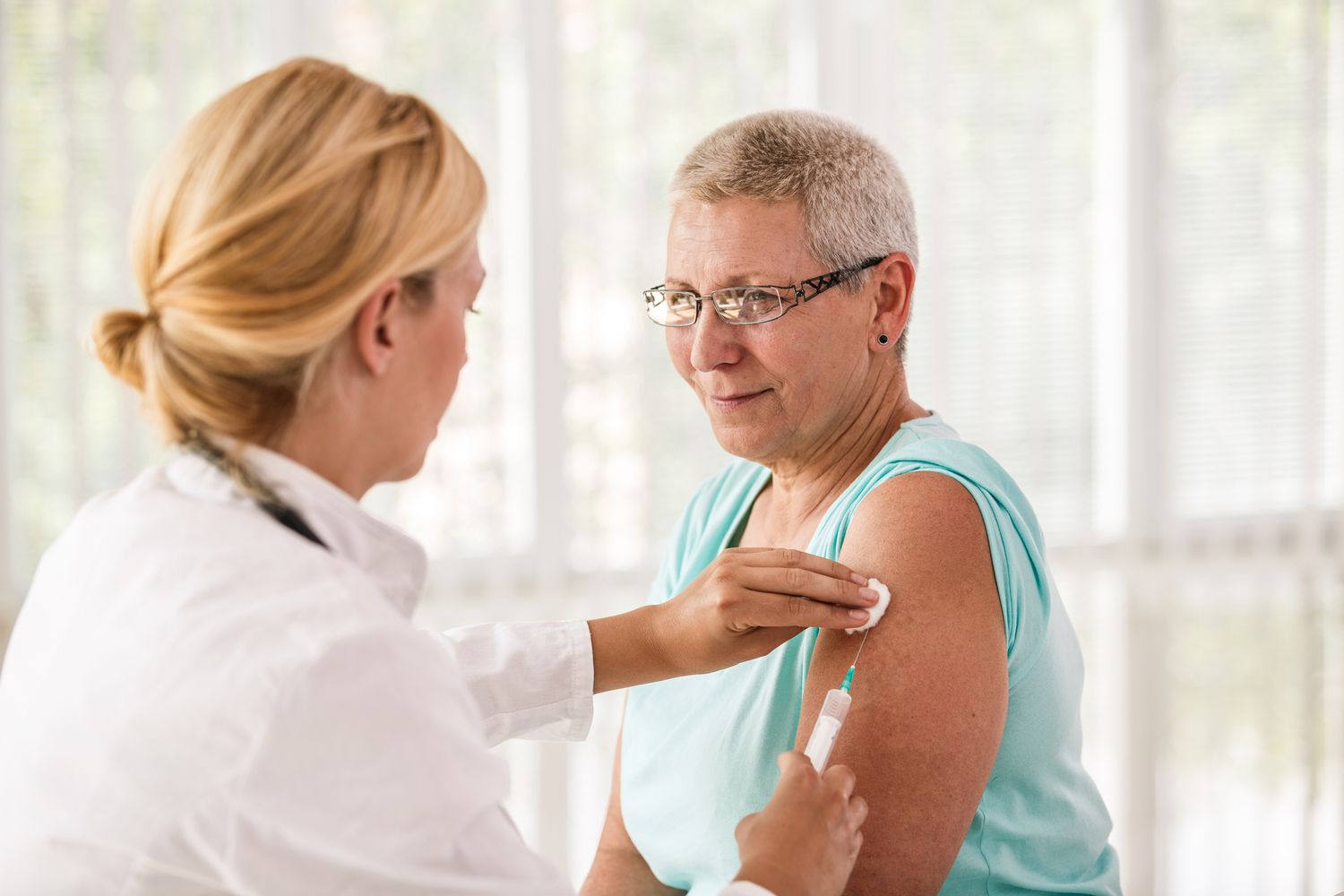Possible Increased Risk of Stroke in Older Adults Getting COVID and Flu Shots Simultaneously

The concurrent administration of high-dose flu and COVID-19 vaccines may marginally increase the risk of stroke in individuals aged 85 and above, according to a recent study by the Food and Drug Administration (FDA).
While the study is yet to get published in a peer-reviewed journal, it is important to note that experts believe the findings should not discourage those eligible for both vaccines from taking them.
Thomas Russo, MD, an expert in infectious diseases at the University of Buffalo Jacobs School of Medicine and Biomedical Sciences, reaffirmed the strong recommendation for vaccinations despite these results. Brandon Giglio, MD, Director of Vascular Neurology at NYU Langone Hospital in Brooklyn, also maintains his recommendation for both vaccines as their benefits likely outweigh the risks.
Although the FDA researchers who conducted the study were unavailable for remarks, a representative for the FDA restated that the vaccines are still deemed safe and effective. The research is part of continuous safety surveillance efforts, with the benefits of the vaccines far outweighing the risks.
The data might seem daunting. However, it's important to understand the potential risk presented in the new findings. The FDA's transparency is key, but interpreting the data comprises uncertainties which need to be considered.
People aged 85 and older should know the implications of the study, and whether staggering vaccines could be a potential strategy for reducing stroke risk. The new study measures data from Medicare beneficiaries who received a high-dose flu vaccine, a Pfizer or Moderna COVID vaccine, or both simultaneously from August 31 to November 6, 2022.
High-dose flu vaccines, technically referred to as adjuvanted vaccines, are often administered to people aged 65 or older due to their weaker immune systems. The research revealed that for each 100,000 immunizations, there were three additional cases of transient ischemic attack (TIA), or "mini-stroke".
As per the new data, a slightly elevated risk of stroke was found among people aged 65 to 74 who received the Moderna vaccine. The risk was increased among those aged 85 and older who received Pfizer's vaccine. An unusual point was that no increased risk was found for people aged 75 to 84, leading to caution in emphasizing the findings.
Besides the marginal increase in TIA among recipients of both COVID and high-dose flu vaccines, a slightly increased risk of stroke was noted in certain individuals who only received a flu shot. According to the study authors, this indicates that the observed risk of stroke in those receiving both vaccines likely stems from the flu vaccination alone.
However, Russo clarifies that the study does not indicate a causal relationship between the vaccines and TIAs. Both COVID and the flu can increase the risk of stroke, says Giglio. The stroke risk can persist up to nine months after recovering from COVID.
Both viruses pose risks of life-threatening complications, particularly among older adults. The flu can increase the risk of respiratory failure and heart attack in older adults, while COVID might lead to severe illness among those aged 50 and over, increasing chances of hospitalizations, intensive care unit admissions, mechanical ventilations, or even fatalities.
Although it is deemed safe to get COVID and flu vaccines simultaneously, some people might prefer to stagger them due to possible side effects, which include redness or swelling at the injection site, muscular aches, and fatigue.
“I would still recommend to my patients that they should get their [vaccinations], but they could definitely separate them by at least two weeks,” Giglio said.
Doing this may make the side effects slightly more palatable since at least you won’t be experiencing them all at once, Russo said.
However, if you live in a rural area, don’t drive, or are otherwise limited in the number of times per month you can visit a vaccination site, you shouldn’t hesitate to get both vaccines at the same time.
“If this is your only opportunity, go for it,” Russo said.
Knowing the warning signs of a stroke is a good idea—particularly if you’re a caretaker of older adults—both in the weeks after vaccinations and beyond, Giglio said.
“In our country, even though people might recognize the symptoms of a stroke, they may not treat them as an emergency,” he said.
The Centers for Disease Control and Prevention (CDC) recommends using the acronym FAST to remember stroke symptoms:
Severe headache, numbness, and eyesight problems could also be warning signs, Russo said.
If you notice any of the symptoms, you should go straight to your local emergency room, Giglio said, bypassing any calls to your primary care doctor’s office or even a visit to urgent care.
Not all facilities are equipped to treat stroke, and it’s always good to know which healthcare center you should report to if you suspect one. Going to the wrong facility first will only delay you, because staff will simply direct you to the emergency room, Giglio explained.
While stroke risk should always be studied, the new data aren’t compelling enough to change any vaccination policies we have right now, Russo said.
“The bottom line here is that the differences are so small that it brings into question: Is this a statistical quirk, or is this something real?” Future studies, he said, will be the only way to tell.




